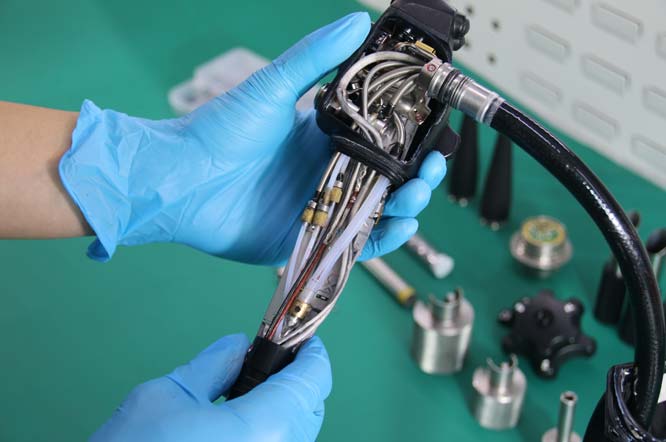
The insertion tube is a critical component of Olympus endoscopes, ensuring flexibility, precision, and durability during medical procedures. Proper maintenance of this component not only extends its lifespan but also guarantees optimal performance, which is vital for accurate diagnostics and effective treatments. This guide will provide nine essential tips for maintaining your insertion tube, ensuring the longevity of your endoscope while reducing downtime and repair costs.
1. Inspect the Insertion Tube Before Each Use
Before each procedure, visually inspect the insertion tube for any signs of wear or damage, such as cuts, kinks, or cracks. A thorough inspection helps identify issues early, preventing potential complications during a procedure. Addressing minor wear promptly can avoid more significant damage later.
2. Clean Thoroughly After Every Procedure
Cleaning the insertion tube after every use is essential to prevent residue buildup. Start with a pre-cleaning rinse using an enzymatic solution to remove organic debris. Follow this by cleaning with a soft brush to ensure all contaminants are removed. Proper cleaning prevents blockages and ensures the tube’s functionality.
3. Use the Correct Cleaning Solutions
Always use cleaning solutions recommended by Olympus. Harsh chemicals or incompatible cleaning agents can degrade the material of the insertion tube, leading to premature wear. Stick to enzymatic or pH-neutral detergents that are specifically designed for endoscopic equipment.
4. Dry Completely Before Storage
After cleaning, ensure the insertion tube is thoroughly dried before storing the endoscope. Moisture can lead to mold or microbial growth, which can damage the tube and compromise patient safety. Use lint-free cloths and proper airflow to facilitate drying.
5. Avoid Excessive Bending
The insertion tube is designed for flexibility, but excessive bending can cause structural damage. Always handle the tube with care, avoiding sharp angles or unnecessary pressure. Proper handling ensures the tube maintains its performance and longevity.
6. Store Properly
When storing your Olympus endoscope, ensure the insertion tube is not compressed or coiled too tightly. Use a storage cabinet specifically designed for endoscopic equipment, allowing the tube to hang freely. This prevents kinks and ensures the tube remains in optimal condition.
7. Perform Regular Maintenance Checks
Routine maintenance checks are crucial for identifying hidden issues with the insertion tube. Collaborate with certified Olympus technicians for periodic inspections and professional servicing. Regular maintenance ensures all components, including the insertion tube, are functioning properly.
8. Replace Damaged Components Promptly
If the insertion tube shows significant signs of wear or damage, replace it promptly. Delaying replacements can compromise the endoscope’s performance and potentially risk patient safety. Olympus provides high-quality replacement tubes that match the original specifications.
9. Train Staff on Proper Handling and Care
Ensure all staff members are trained in the proper handling and maintenance of Olympus endoscopes. Misuse or improper cleaning techniques can lead to unnecessary damage. Regular training sessions help reinforce best practices and ensure consistent care for the insertion tube.
The Role of Accessories in Maintenance
Supporting accessories can improve the maintenance process. For instance, a metal ceiling fan in the cleaning or storage area ensures proper ventilation, speeding up drying times and reducing humidity. Accessories like these contribute to the overall care and preservation of your endoscopic equipment.
Conclusion
Maintaining the insertion tube of your Olympus endoscope is a vital aspect of ensuring its functionality and longevity. By following these nine tips, you can minimize wear and tear, reduce downtime, and improve the overall performance of your endoscope. Regular care not only extends the equipment’s lifespan but also enhances patient safety and clinical outcomes.
You may also read: Exploring the Role of Green Roofs in Urban Landscaping
